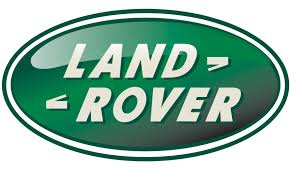L322 Range Rover System Description and Operation

SUSPENSION
60-8
DESCRIPTION AND OPERATION
The dampers are located between the lower wishbone and the vehicle body. The lower mounting is fitted with a bush
which provides for the attachment to the wishbone with a bolt and nut. The damper top mounting is located in a turret
in the body and secured to the body with three nuts. A paper gasket is located between the damper top mounting and
the body and prevents the ingress of dirt and moisture into the mounting studs and corresponding holes in the body.
It is important that this gasket is discarded and replaced with a new item when the damper is removed.
Air Springs
Each air spring comprises a top plate assembly, an air bag and a base piston. The air bag is attached to the top plate
and the piston with a crimped ring. The air bag is made from a flexible rubber material which allows the bag to expand
with air pressure and deform under load. The top plate assembly comprises the plastic top plate with a spigot which
protrudes through a hole in the subframe. On the side of the top cap is a connector which allows for the attachment
of the air hose from the cross-link valve. The piston is made from plastic and is shaped to allow the air bag to roll over
its outer diameter. The base of the piston has a splined stud in the centre and an offset timing peg for correct
orientation of the air spring into the lower wishbone.
The air springs are located rearward of the dampers and are retained between the subframe and the lower wishbone.
The air spring is attached to the lower wishbone with a screw which is fitted from the underside of the wishbone into
the splined stud on the base of the piston. The air spring top plate is attached to the subframe via an integral 'D'
shaped spigot which is secured with a retaining clip.
Subframe
The subframe is fabricated from steel tubing to provide a robust platform for the mounting of the suspension and the
rear differential. The subframe is attached to the vehicle body via four, voided rubber mounts.
The subframe provides location for the suspension components and the rear differential. Two bushes at the front of
the subframe and one at the rear allow for the attachment of the rear differential. Additional brackets, bolted to the
subframe, allow for the attachment of the height sensors. The anti-roll bar is attached across the rear of the subframe
and is mounted in flexible bushes which are secured with 'D' shaped clamps.
Upper and Lower Wishbones
Upper Wishbone
The steel fabricated upper wishbone has two bushes pressed into housings which provide for the attachment to the
subframe. The bushes are located between brackets on the subframe and are secured with bolts and nuts. The outer
end of the upper wishbone has two brackets with slotted holes. A boss on the hub is fitted with a ball joint which locates
between the brackets and is secured with an eccentric bolt, washer and nut. This allows for the adjustment of the rear
wheel camber. Rotation of the bolt moves the eccentric head against a recessed slot in the bracket, moving the
location of the hub in the upper wishbone slots, allowing the camber to be adjusted to within the set limits. A rubber
bump stop is fitted centrally on the upper wishbone to cushion the wishbone movement when the suspension is at the
extremes of its travel.
Lower Wishbone
The lower wishbone is larger than the upper wishbone and is a steel fabrication. Two bushes are pressed into the
wishbone and provide for the attachment to the subframe. The bushes are located between brackets on the subframe
and secured with bolts and nuts. The lower wishbone has a platform which provides for the attachment of the air
spring. A welded bracket allows for the attachment of the anti-roll bar link. A boss on the hub is fitted with a ball joint
which locates between brackets on the lower wishbone. The hub is secured to the lower wishbone with a bolt and nut.
A bracket with a tubular extension provides for the attachment of the damper lower mounting.
Toe Control Arms
The toe control arm is a forged steel component. One end is fitted with a taper ball joint and the opposite end has a
bush pressed into an integral housing.
The bush locates between brackets on the subframe and is secured with a special eccentric bolt, washer and nut.
This allows for the adjustment of the rear wheel toe in. Rotation of the bolt moves the eccentric head within a recessed
slot in the bracket, allowing the toe-in to be adjusted within the set limits.
The taper ball joint locates in a tapered hole in the hub and is secured with a nut.
